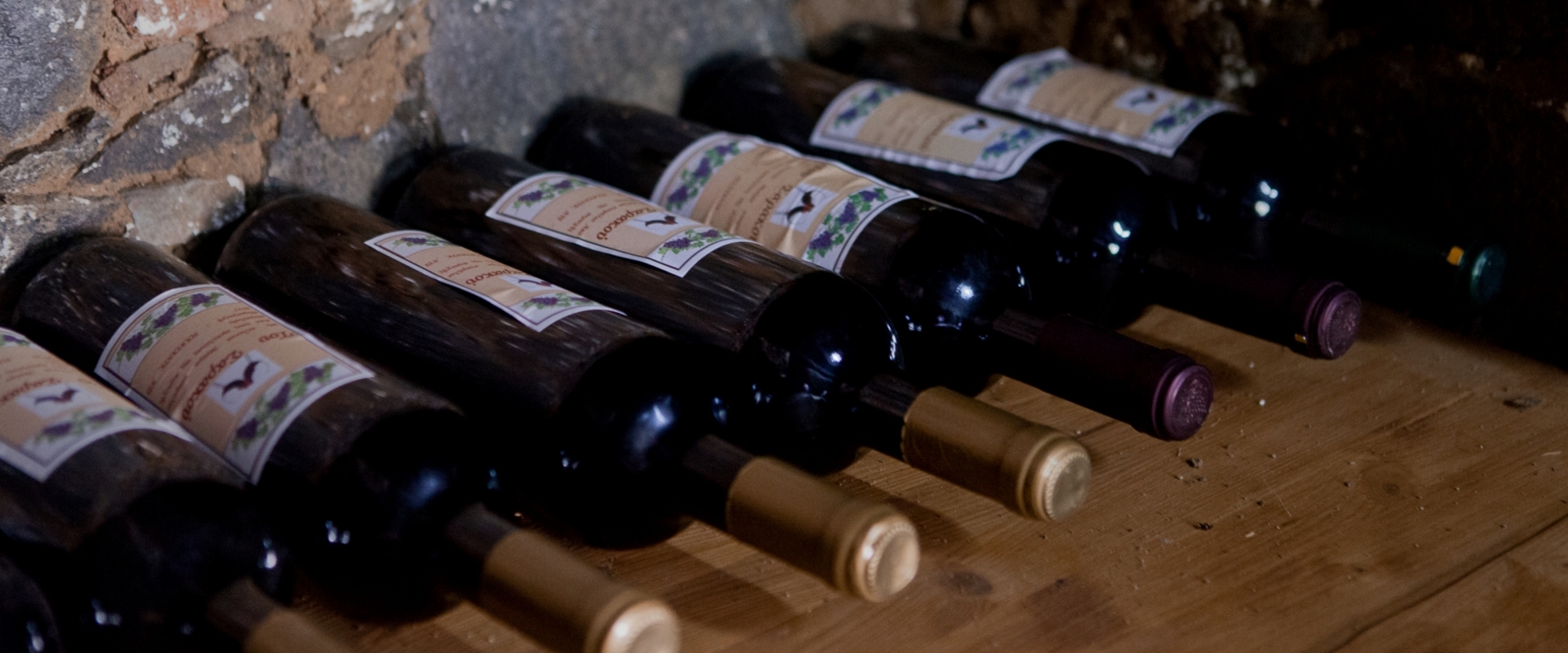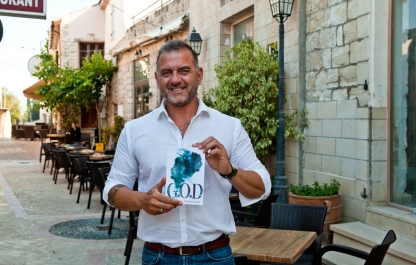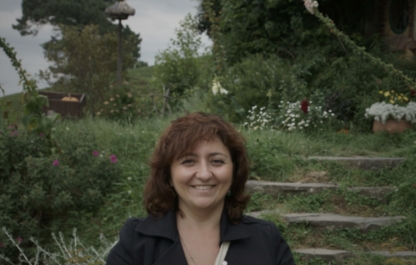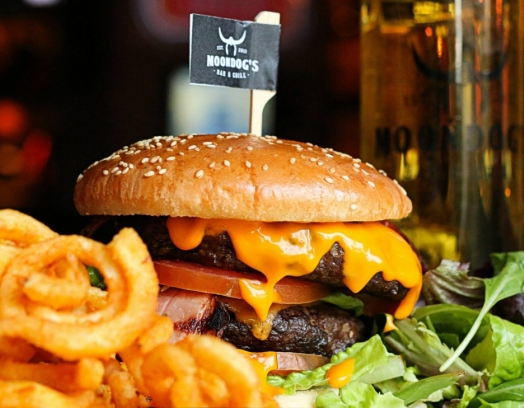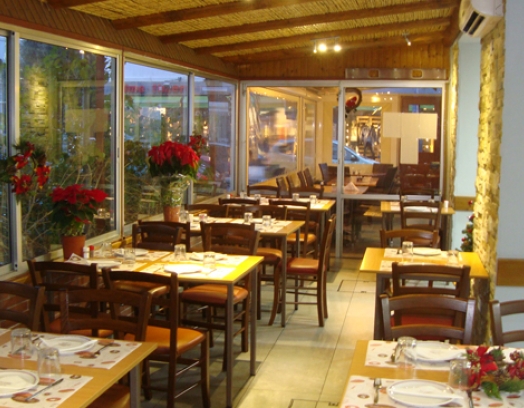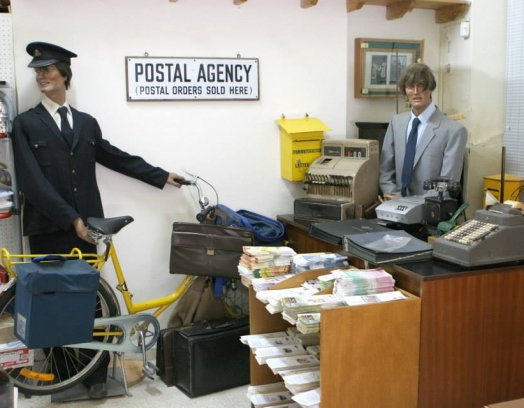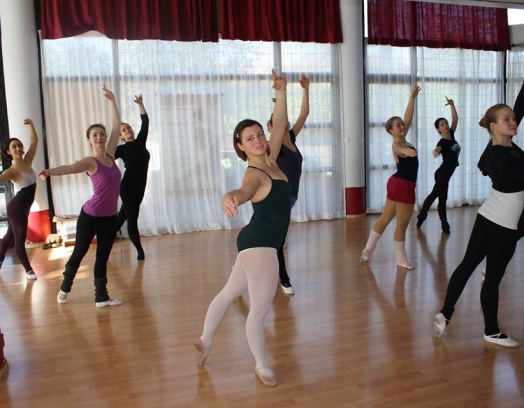We’d decided that we wouldn’t speak again and again about how the island of Cyprus is such a superb place for cultivating grapes and winemaking. Any guide will gladly tell you about the various sorts of grapes and how many of them (with the possible exception of Xynisteri and Mavro — the autochthonous black and white grapes which have predominated for many years) have been imported from 30 countries in the world…
And yet, after our first visit to the mountainous village of Platanistasa, it became clear that we would return here and repeatedly for that matter. The reason for this was the desire to see for ourselves how wine used to be made here in the past — at one of the island’s small family wineries, which are high in number on the island. As you well know, the process of winemaking is a widely practised and spans over long centuries, especially in regions where the grapes used to make wine are grown and cultivated.
Winemaking, along with popular brands of alcohol products, is practised today on industrial scales. But we were curious to see how the modern-day process reflected on manual winemaking (in other words, producing wine in small volumes by hand, in contrast to industrial winemaking). It is rated highly by connoisseurs and wine lovers, whose pallet has now been rather spoilt and even sated with the abundance of offers at their grasp.
At the same time, we wanted to learn more about the process of wine distillation itself, as well as the use of its “waste” to produce zivania — the well-known Cypriot moonshine, with a grape-pulp base.
Sheltered under a Grape Vine
Since business is very scarce in the quiet and cosy village of Platanistasa, the family of Mr Giorgos Spetsiotis produces wine for themselves. The owner came up with the concept, while the winemaking procedure itself has been preserved and practised using “an old-fashioned method”, albeit taking into account the demands of today’s drinkers.
We’d managed to discover this wine previously, thanks to their other and widely known “face”, which namely involves the production of meat delicacies, also by using an age-old technique. In fact, one can say the wine of this small “brand” isn’t just put on the market for sale (in the same “boutique” on the village square, the address of which we will definitely remind you of at the end; or in the local restaurant, especially during village celebrations and festivals).
Together with his friendly team of hired workers, the owner often uses it to make smoked foods, in combination with an original recipe — after all, both “products” are situated close to one another, on the lower “levels” of the founder’s home.
The vineyards, in which the grapes required for the production of the dry red “Sarakou” or the light “Roze” grow, are rented by the family from other fellow villagers and landowners.
Interestingly, the winery of this business, founded in 1965, is in essence, located in a historical spot: wine was also made at one time within these ancient walls. We visited the winery and saw some appliances from past years, which are still actively used today.
The main “section” of the winery is a small, semi-underground room, with a low ceiling and thick stone walls, lying behind a funny-looking door. The collected harvest of grapes is brought here and dumped from above into the press, where it is appropriately mashed and grounded. After it has been processed and is almost “ready”, the raw material is left to mature for 12 days. Everything is then filtered through standard woven baskets.
I’ll say straight away that the remaining pulp (grape peel and pips) is not thrown away but is further used, as it was hundreds of years ago, to make zivania,
And now civilisation begins: the finished wine is distilled into 220-litre barrels, stored in large quantities for a year and then poured into a steel tank. When the need arises, the wine is then sent to the upper level with the aid of a pump and pipes, where the entrepreneur’s main factory of smoked meats and delicacies is located.
And here descends what is known as the moment of truth, the climax: together with Mr Spetsiotis, we went upstairs and entered the factory smoking shed. Near to the entrance above a metallic table, there was a standard-looking tap with a valve, protruding above a sink attached to a wall with white cladding.
Anticipating our reaction, the owner opened the valve and voila: with a delightful gurgle, a ruby liquid began to spout from the tap and air filled with the smell of wine… Simply a wine lover’s dream!
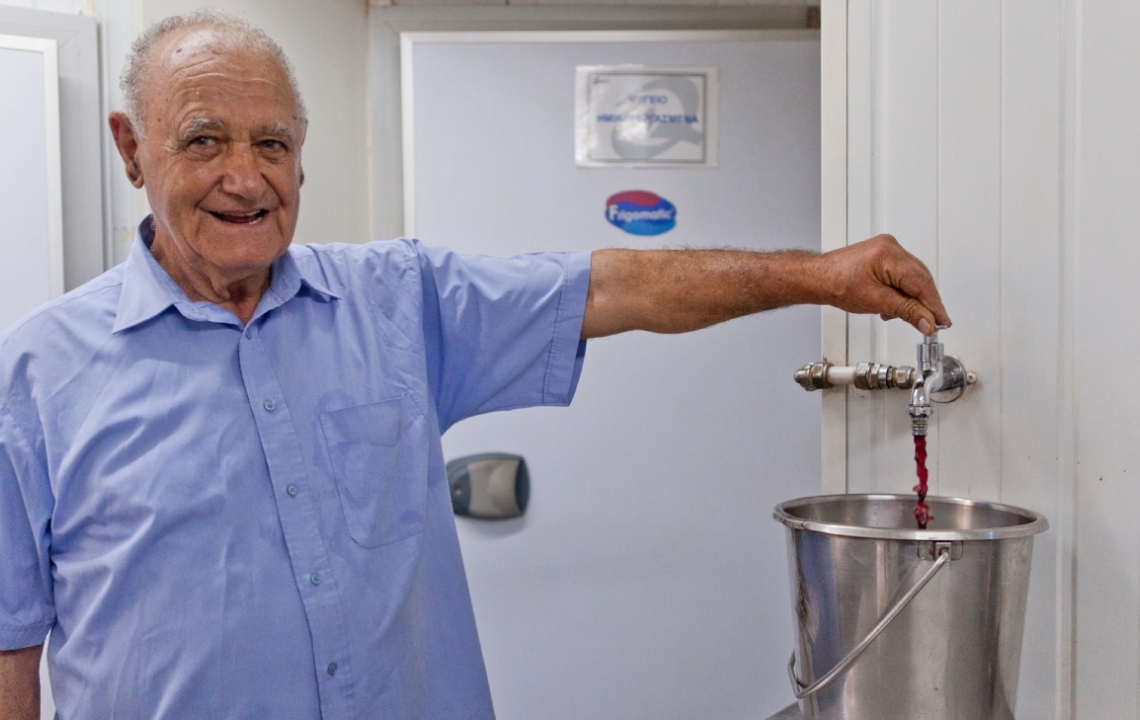
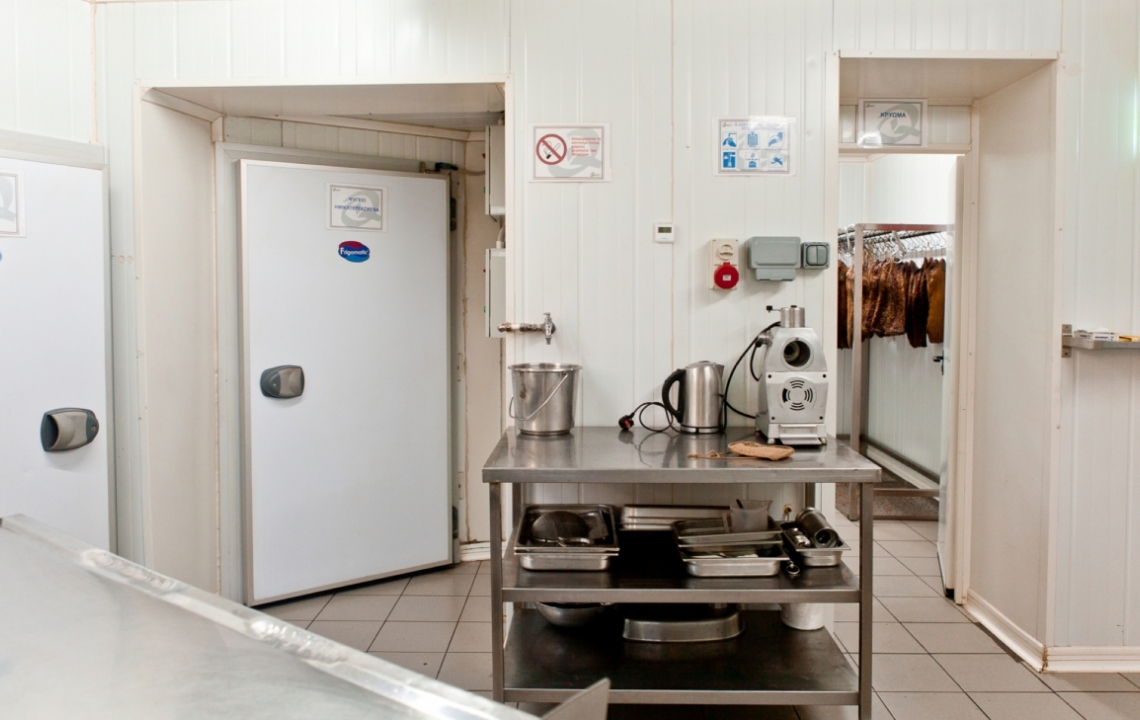
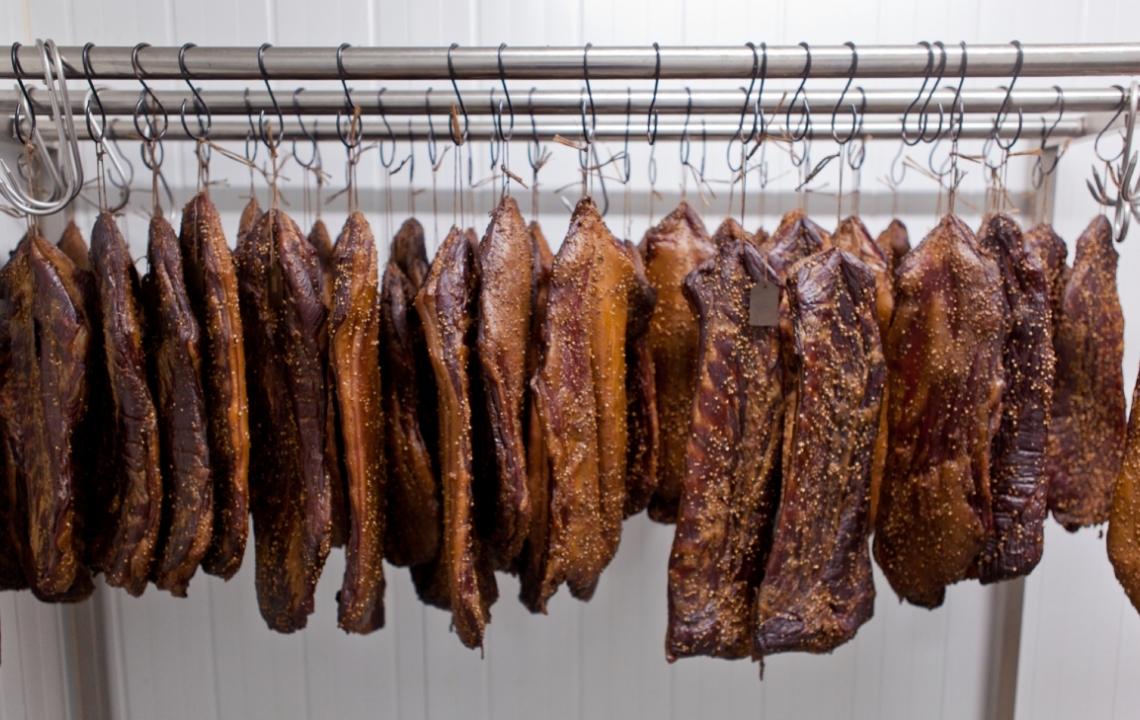
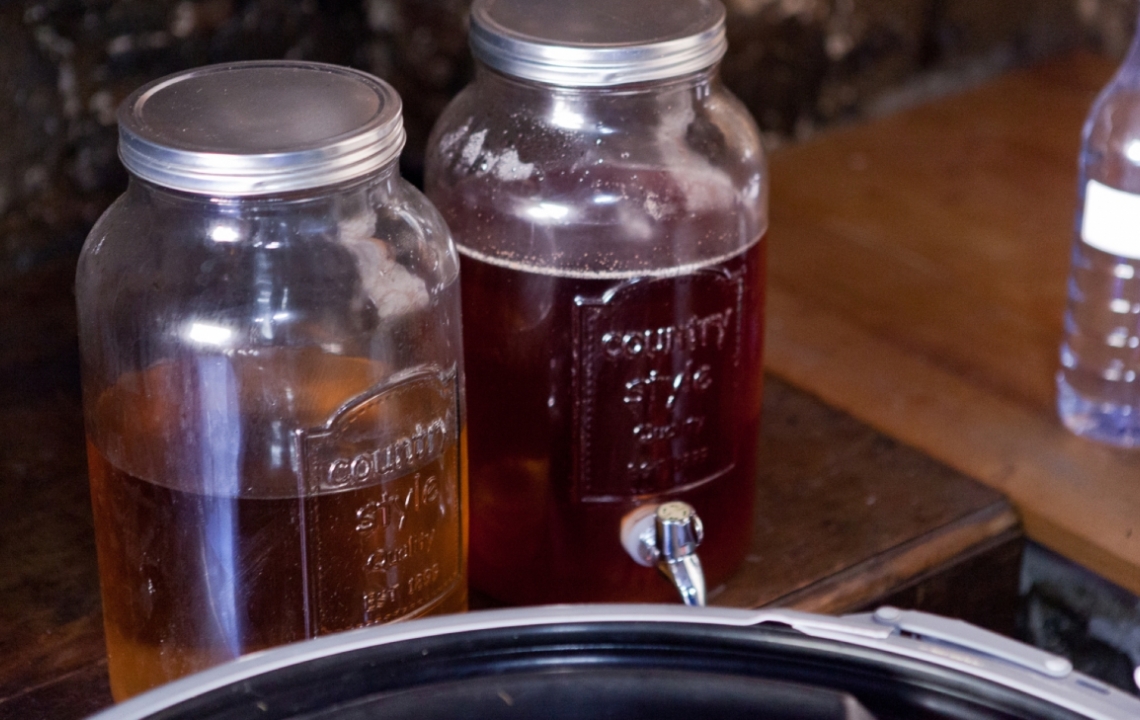
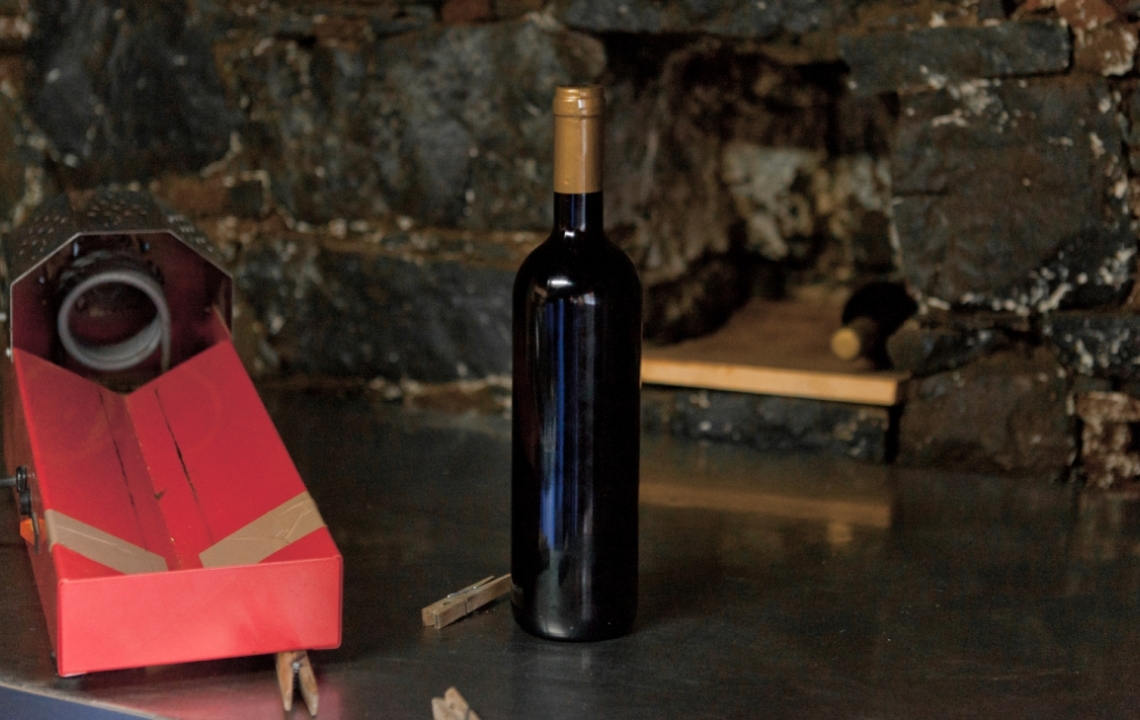
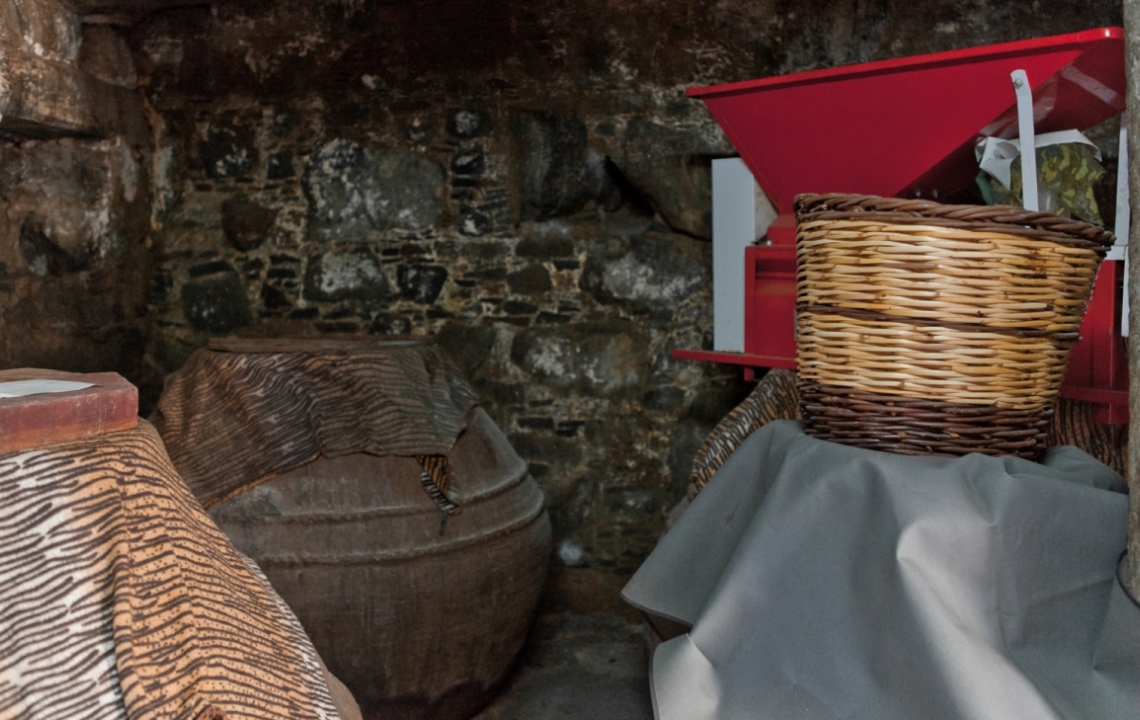
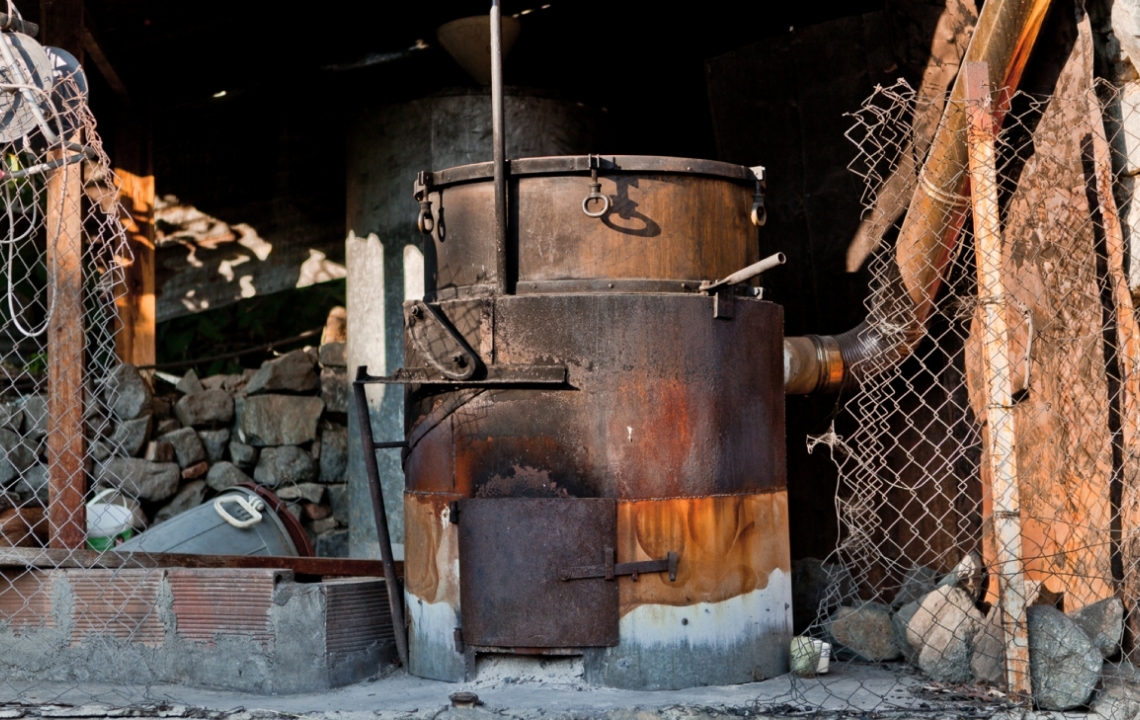
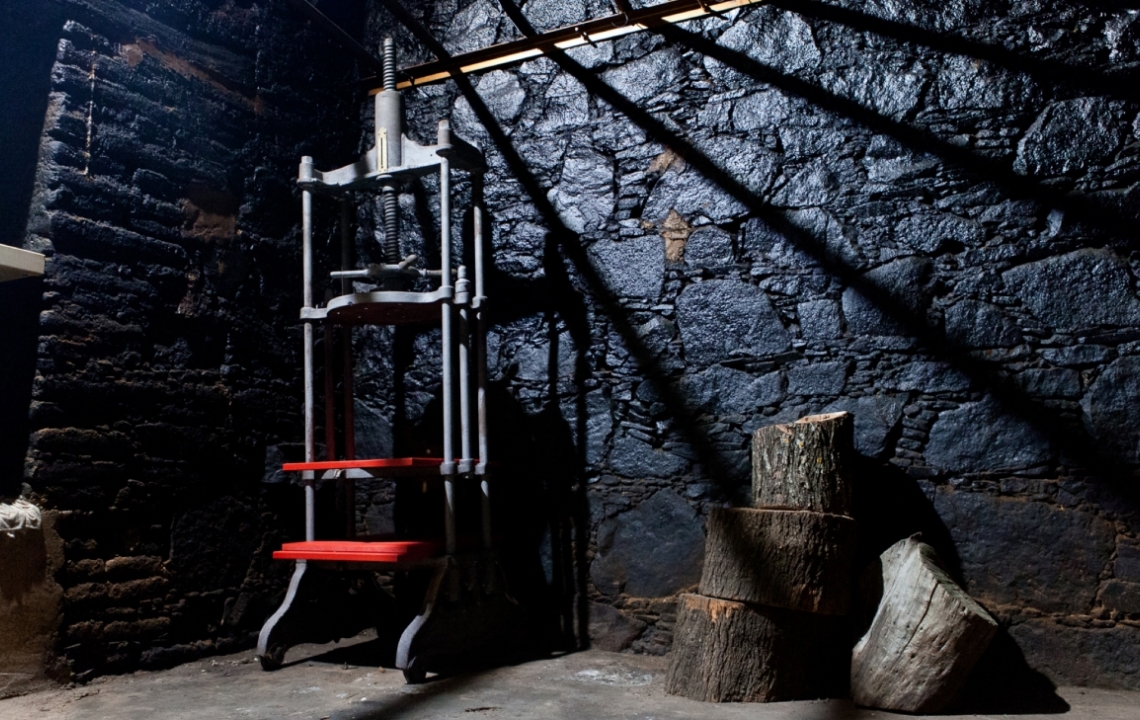
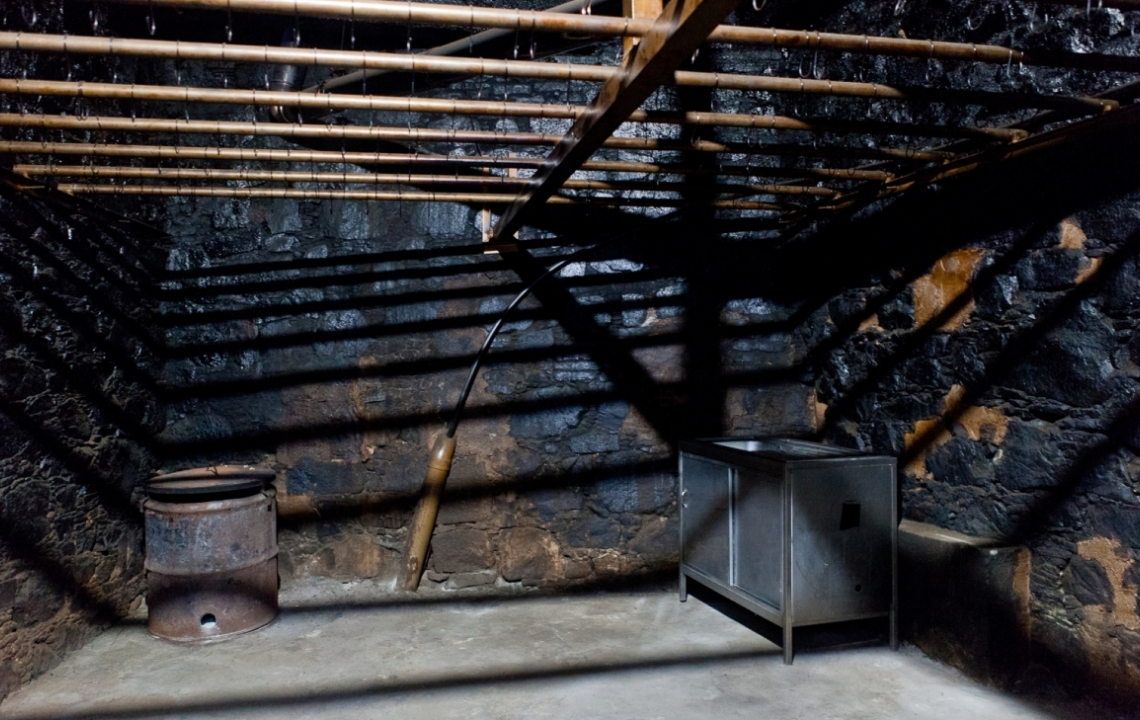
It is poured by hand into glass bottles on a table, then corked and stamped with a special machine — everything done just like it should be! But what next? As we said at the beginning, the bottled products then go on sale. You will always be able to purchase one — naturally, after a compulsory tasting session accompanied by meat delicacies, which are also selected after a small, voluntarily-forced (joke) “test-buffet” organised at the counter by Mrs Panayiota for all visitors.
Buying a bottle of wine and some delicious snacks to go with it is perhaps a wonderful occasion to see friends and organise a party!
You can use dry-red in your culinary exploits, if you decide to take a crack at cooking Cypriot cuisine (Mediterranean, on the whole) such as stewed seafood (octopus in wine with onions and spices), for meat marinades and other miscellaneous dishes.
And well, the rest of the bottled wine will be stored downstairs in the winery: the temperature and humidity levels, inside walls which have darkened over time, thus reliably preserving stable conditions, are favourable for a wine cellar.
“Z” or Almost under the mark of Zorro
Nearby the winery, we spotted the same “ancient” unit used to manufacture the “fiery water” — zivania [1]. It was standing in an old garden, under the canopy of a long-standing building. We were then invited to take a look around: the pulp leftover from the “wine production”, which takes place on the other side of the street, goes here.
By the way, it’s worth saying a few words about the street. Judging by its name (Arch. Kyprianou Sreet), it’s the second most significant “main road” in Platanistasa. The road runs through the entire village and lies in a very scenic setting, far lower down than the main road along which we arrived.
This street has a very high-profile name (only some of the most famous streets and avenues in many inhabited areas of Cyprus have this name). Despite this and its relatively great length, lying along a slope above the mountain ravine, I personally defined it as a “pedestrian avenue” of sorts. After all, the private and domestic life of the village is focused around this spot, hidden from the eyes of visiting strangers, who after accidentally ending up here, immediately become objects of attention and study. However, if you can possibly do so without making noise, it’s worth having a stroll around: this is one of the most picturesque spots in old Platanistasa! Not only can you see elements of nature here which have long since disappeared, as well as the everyday life of Cypriots from past ages, but even the smells and aromas dispersed around — it’s as though it’s all from a different time.
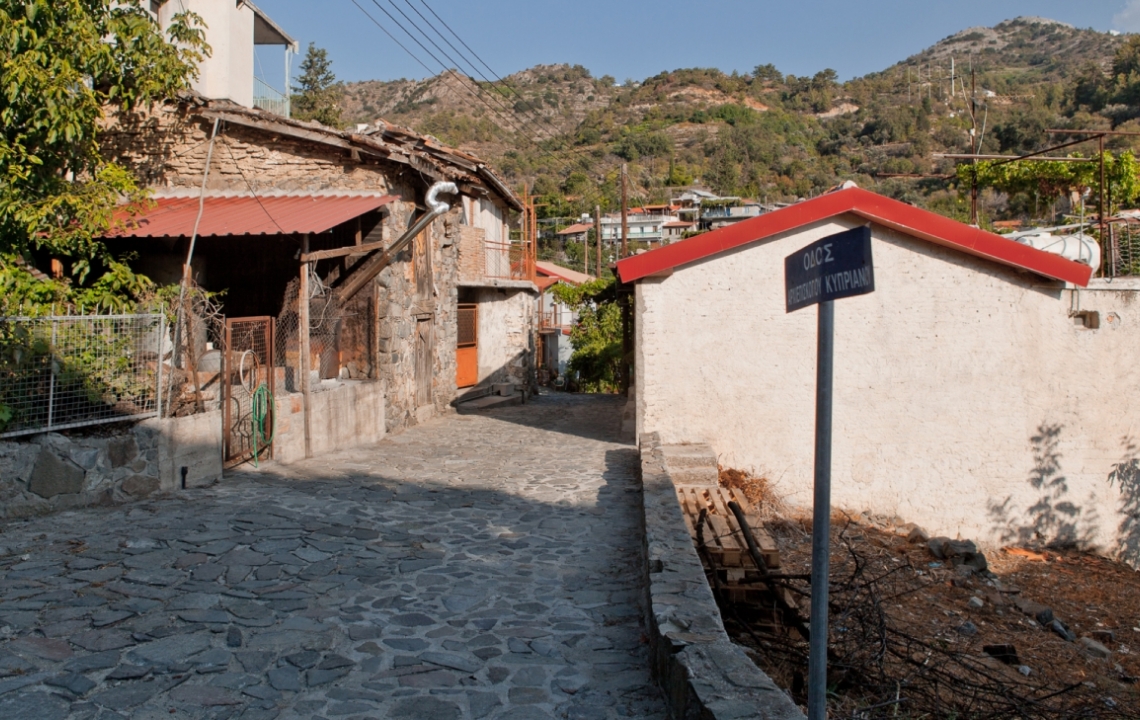
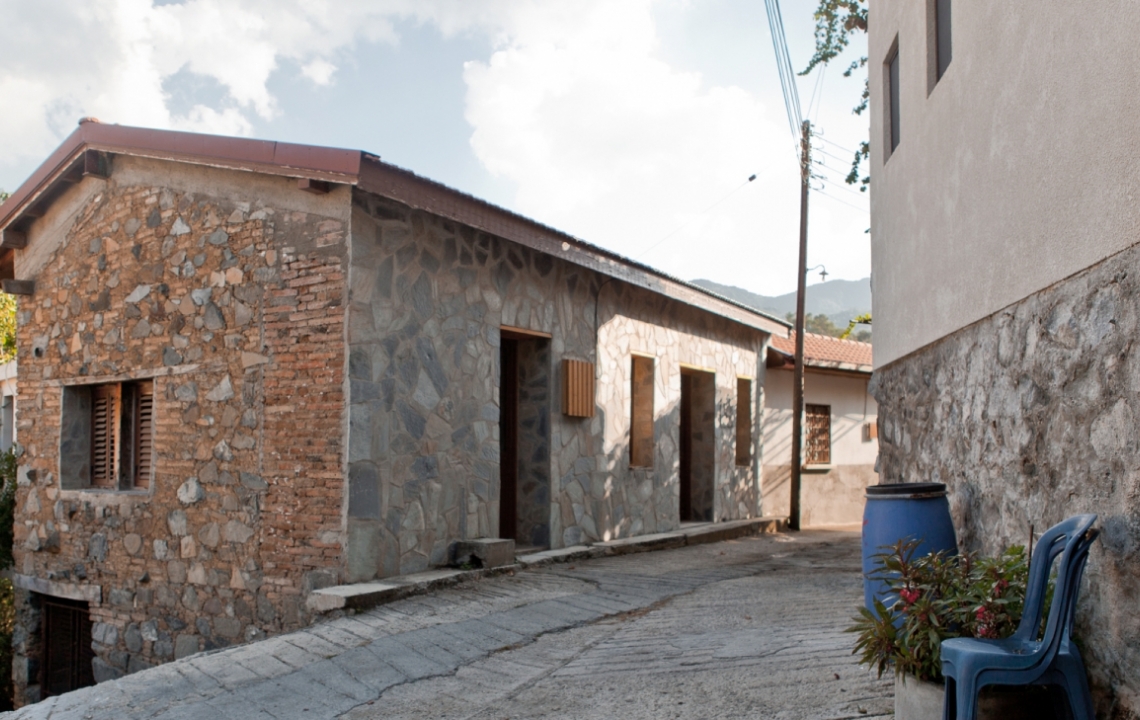
Let’s get back to zivania. I think many are familiar with the distillation procedure [2]. By the way, sugar isn’t added to classic zivania — something which our friends in Platanistasa have already been making for many long years… however, you can come across mentions of how in many island regions, various ingredients are sometimes added to the drink, to enhance the taste.
For general information, if you’re not up to date. Zivania (in Greek zιβανία) is a strong alcoholic beverage of Cypriot origin.
The name originates from a local type of grape called “zivana”. The strength of zivania is rather high and has varying limits from around 43-44% to 52% (rumour has it that homebrews can reach a whole 70-80%). The manufacturing recipe has been passed from generation to generation, and people are considered to have begun distilling it roughly in the late 14th-15th century.
In our day, the leading manufacturers are the 4 “alcohol giants” in the country: KEO, SODAP, ETKO and LOEL. That said, one of the strongest and highest quality zivania is still produced in Kykkos monastery!
The process of making zivania (also known as “Cypriot whisky” or “brandy” and by nothing else!) isn’t a task of particular difficulty — you’ll have understood this from repeatedly noticing the cherished “apparatus” in the exhibitions of different folk museums and every once in awhile, on the premises of old farmsteads.
So, to make it, water is added to the mass of raw materials which are involved and leftover in the production of wine, then the drink is obtained by distillation. Though the process takes a while, Cypriots are fascinated by the actual ritual which goes into manufacturing the beverage — one shrouded in time and tradition: “a kazani” — a tank, joined by a pipe to a large clay jug “a pitari”, is filled with pulp which has been slightly diluted beforehand. A fire or burner is then roused, and the mass is boiled off. Besides, before its “execution”, the pitari is filled with cold water and submerged, usually up to half its depth, in the earth. It also has a hole specially installed for expelling water.
From there, the zivania is “met”, collected in flasks and sent to storage, later to be poured into tares. The first drops of the “nectar” are the richest in flavour and contain the most alcohol, while the final portion — the “porakos” — due to its “lightness” (merely a little more than 20%), is not put on sale.
After the zivania is made, the recycled pulp also finds subsequent use for itself: now in the form of fertiliser on fields and in gardens of assiduous locals. Albeit a modern-day one, such is the traditional and very ecological production of zivania!
When manufacturing zivania using only grapes (“white zivania”), the flavour proves to be somewhat specific for today’s consumers. Therefore, to diversify the drink and give it a rich aroma, cinnamon, basil, fig pips and honey are added — resulting in a variety of “red”.
There’s also “golden” zivania when the liquid is matured for several years in oak barrels.
In our case, our moonshine “ensemble” turned out to be so old that our cordial host didn’t even know who had designed it (a tinsmith or even blacksmith). However, he noted that in past years, as well as today, the purchase of units was easily made in Limassol.
There exists a custom in Cyprus of drinking zivania together with ice and a national selection of meat snacks: mezze or smoked sausages — loukanika; and ham — loundza.
And yet, sweets are still the most common and appropriate form of accompaniment to the drink: sudzhuko, lukum, dried fruits and of course, various nuts.
Interestingly: zivania is widely used today on the island, as it was in times of old, for medicinal purposes. The drink is administered to treat wounds, colds and muscle pains — through the application of a compress in an ointment form; also as a sedative for severe toothache.
If all your ails have successfully passed, bear this in mind: zivania has long been renowned as an effective (albeit somewhat exotic in our day) means for cleaning windows, Cypriot style! Don’t forget, after all, that this item is produced solely on our island and nowhere else [3].
A tip from us: when are you best heading to “zivania” Cyprus?
So, October is the official month for zivania on the island! It begins (opens, even) very ceremoniously, in the presence of top public officials. This is the time when there will be festivals, and tasting sessions held all over the island for this national drink — literally HERE, THERE AND EVERYWHERE. Make note!
The address for Diosmati boutique we promised you “from Spetsiotis”
Address: Grigori Afksentiou, 62 (Platanistas)
Tel.: (+357) 22652440, (+357) 22652623, (+357) 99643761
Website: www.diosmati.com
Email: diosmati@outlook.com
Well, that’s all from us, for now.
Until we meet again to make more discoveries!
[1] Nowadays, you can try or buy Cypriot zivania from practically any manufacturer on the island, as well as in your own country of residence. It has become popular in European countries and Russia, as well as many other regions of the world.
Here are some sites to order zivania: www.foodfromcyprus.com; www.whiskyden.uk and others.
[2] It was first mentioned in the 1st century, thanks to the discovery of treatises written by Greek alchemists from those times. The crux of the technological process — literally distilling the liquid “drop by drop” — consisted of providing conditions which allowed for evaporation and subsequent condensation of the vapour during cooling, once again turning into a liquid (distillation). The necessary equipment: a heated distillation cube-tank, as well as a cooling condenser and steam pipe to connect them.
[3] Since 2004, the name “zivania” has been protected under EU law: only the corresponding products of the Republic of Cyprus possess the right to bear its name. The main chemical characteristics of this item were recorded even earlier: in 1998, in accordance with the so-called “Industry Rules and Regulations of the Grape Production Commission”.

